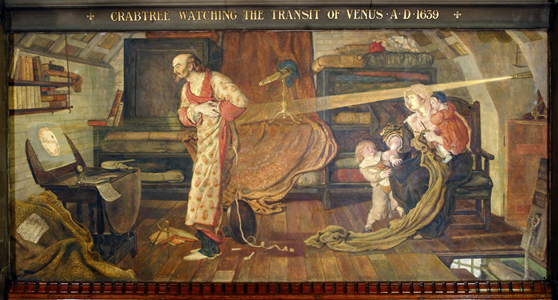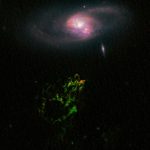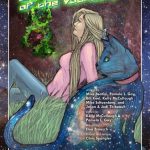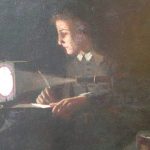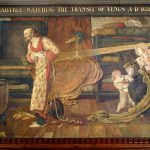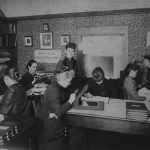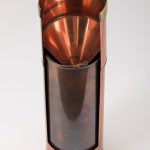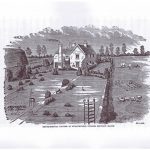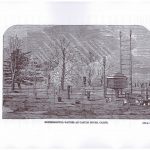Old weather: citizen scientists in the 19th and 21st centuries
Old weather: citizen scientists in the 19th and 21st centuries
https://dx.doi.org/10.15180/150304/001In 2010 the Royal Society journal Biology Letters published an article, ‘Blackawton bees’, which caused something of a sensation: the findings, on bees’ foraging patterns, were original, but the true originality lay in the fact the experiments were in part devised, and the paper written, by a group of 8- to 10-year-old children at Blackawton Primary School in Devon (Blackawton et al., 2011).[1] The article attracted considerable media attention, troubling, as it did, the boundaries of professional science, and distinctions between scientific practice and education, not to mention the hierarchies of age and experience. It has not, so far, created a surge of scientific papers written by schoolchildren, but it remains a significant and compelling example of what might be possible if we adopt a more inclusive vision of science. The Blackawton bees project has strong resonances for our own AHRC Science in Culture project, ‘Constructing scientific communities: citizen science in the 19th and 21st centuries’, which is based at the Universities of Oxford and Leicester, in partnership with the London Natural History Museum, the Royal College of Surgeons and the Royal Society (www.conscicom.org).[2] The project explores, and contributes to, the growing movement of what has come to be known as ‘citizen science’, principally through the online Zooniverse platform (www.zooniverse.org), founded by co-investigator Chris Lintott, but also through historical research into the networks and communities who contributed to science in the 19th century, during a period when professional structures were only just emerging.
Citizen science is a term that has entered into our vocabulary over the last 20 years, and has various uses in current practice: the report of the UK Environmental Observation Framework ‘Understanding citizen science and environmental monitoring’ (Roy et al., 2012) defines it simply as ‘the involvement of volunteers in science’. The term has recently been added to the OED lexicon, which frames it as ‘scientific work undertaken by members of the general public, often in collaboration with or under the direction of professional scientists and scientific institutions’. More specifically, it has also come to be used over the last ten years as a description of internet-based science projects which employ the time, energies and abilities of volunteers to analyse large data sets. There are connections here with ‘crowd sourcing’ techniques, but what distinguishes the work of the Citizen Science Alliance, and the Zooniverse platform with which we are working, is a desire to establish a distributed community of citizen scientists who work in collaboration with professionals, contributing to both the advancement of science and their own scientific education.
At its best, such work can produce spectacular results, as in the Dutch schoolteacher Hanny van Arkel’s discovery of a new astronomical object, ‘Hanny’s Voorwerp’ (see Figure 1), which has inspired a new area of scientific investigation, as well as a comic book devoted to her discovery (see Figure 2).

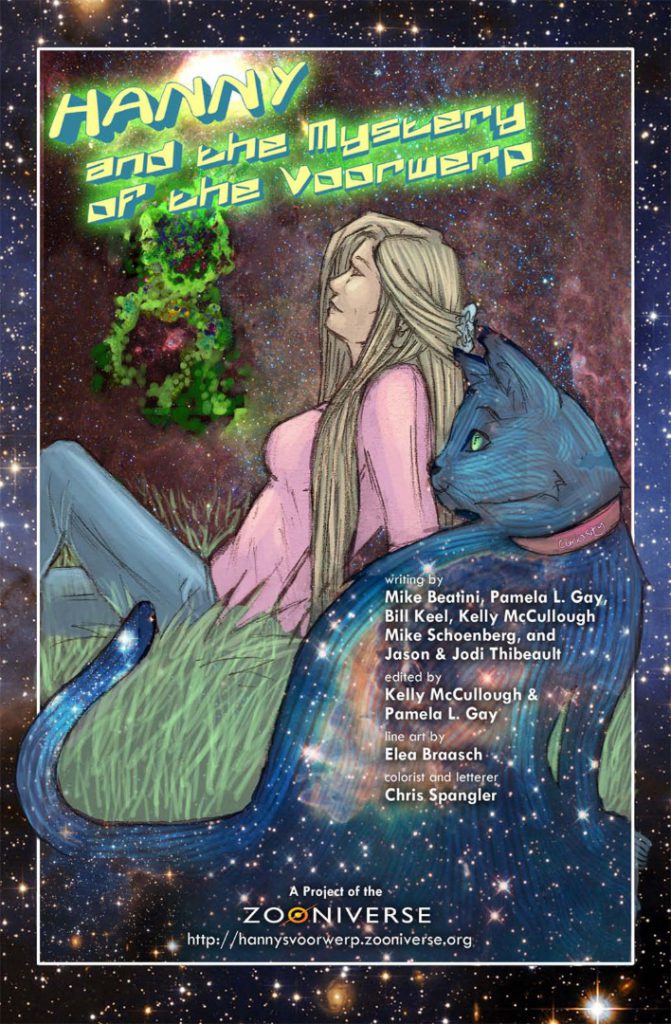
The story attracts because of its intriguing conjunction of seemingly unlikely elements: a young schoolteacher of English, with no interest in astronomy, reads a blog from Queen’s guitarist, Brian May, about an online project on astronomy, Galaxy Zoo. She goes online, starts to classify galaxies, and eight days later her untrained eye notices an unusual coloured object in one of the pictures and she posts a query on the site’s online forum. Interest in the object builds among the amateur online participants, until their questions are taken up by Chris Lintott and other astrophysicists, and further scientific investigation and analysis confirms that a new phenomenon has indeed been discovered.[3] The tale could belong to a Victorian manual of self-help, except this is not a story of heroic struggle against adversity. Nor does it fit the model of the lone, self-taught observer, who through dedicated and painstaking work is able to transform scientific understanding, as exemplified in the life of Jeremiah Horrocks, the lowly tutor (or minister) who realised that Kepler’s calculations were wrong and was thus (in many accounts) the only person to witness the transit of Venus in 1639.[4] (see Figure 3) (In fact, Horrocks was part of a northern correspondence network of astronomers, and had exchanged calculations with William Crabtree, a Salford cloth merchant, who also witnessed the transit (see Figure 4). Lonely sweepings of the night sky are replaced in the modern version by evenings at the computer screen, and isolation by community, albeit in a virtual form. Without the engaged responses of fellow participants in Galaxy Zoo to her query, ‘What’s the blue stuff below? – Anyone?’, it is probable Hanny van Arkel’s interest would have waned, whilst the confirmation of the discovery is itself then made possible by the further engagement of the professional science community.
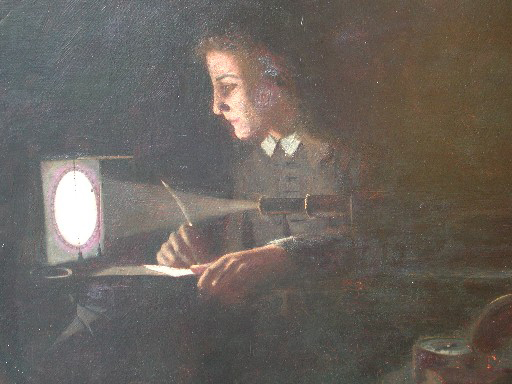
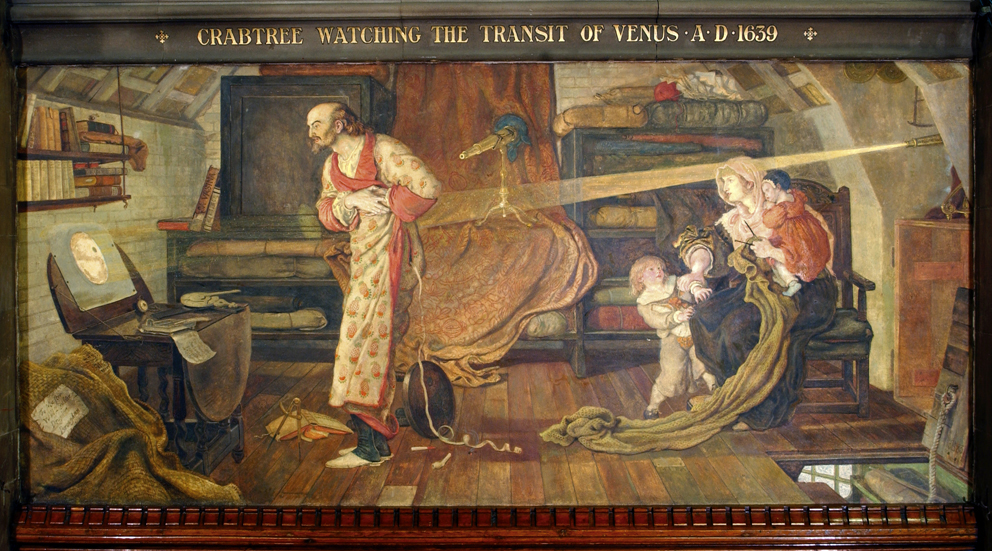
Astronomy, with its disciplinary requirement for multiple and geographically dispersed observations, has a venerable history of popular engagement and observation. Thus the German astronomer Friedrich Argelander made ‘An appeal to the friends of astronomy’ in a German astronomical yearbook of 1844, calling on all amateur astronomers to send in their observations of variable stars.[5] Argelander entreats ‘all lovers of the starry heavens’ to help him in his task. They should not, he observes, be deterred by either the language of the paper or the apparent difficulty of the observations. He remains convinced ‘that whoever carries on these observations for a few weeks, will find so much interest therein that he will never cease’. His one request (Argelander, 1912, pp 207–8) is that ‘the observations shall be made known each year. Observations buried in a desk are no observations. Should they be entrusted to me for reduction, or even for publication, I will undertake it with joy and thanks, and will answer all questions with care and with the greatest of pleasure.’ His vision is of a distributed community of dedicated observers, probably self-taught, but all thoroughly enraptured by the task in hand, which is pursued for its own sake and for the love of contributing to the advance of knowledge. His own role will be both that of mentor and servant to the community. Rather appropriately, the appeal was later translated and republished in Popular Astronomy (Argelander, 1912) by Annie Jump Cannon, one of the ‘human computers’, or more pejoratively ‘Pickering’s women’, assembled by Professor Edward Pickering at Harvard University in the 1880s and 1890s to help him classify stars.[6]
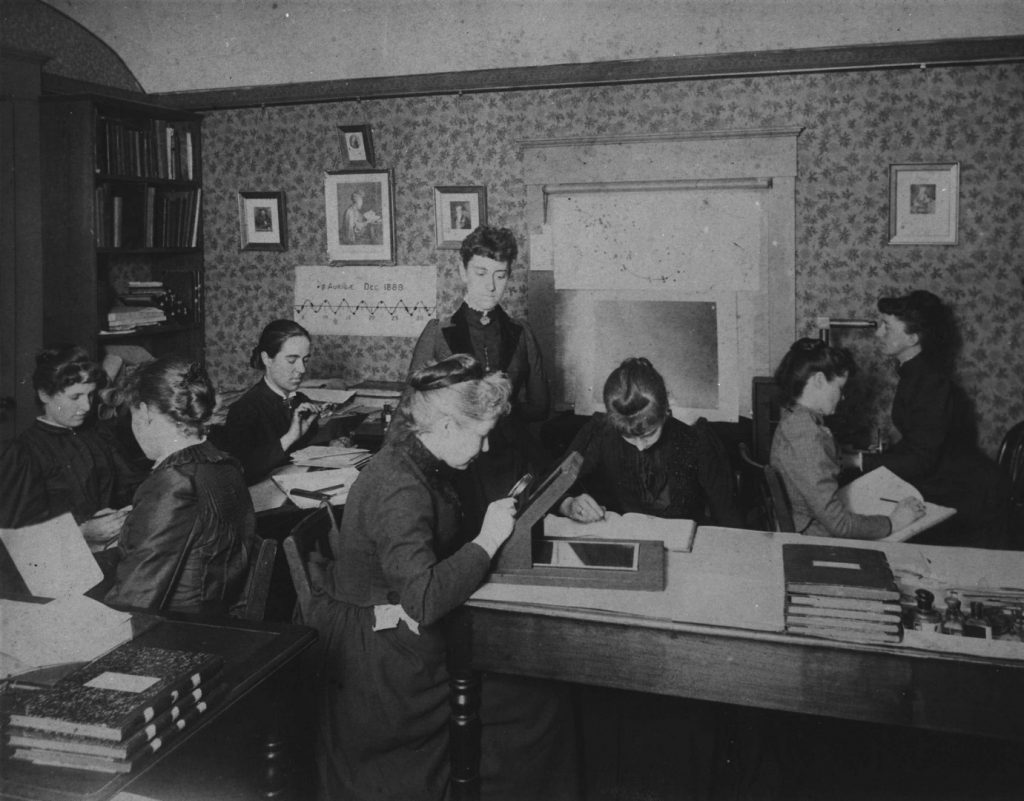
Employed specifically because they were cheap, and could thus enhance volume, these women were astonishingly effective, and none more so than Annie Jump Cannon, who during her career at the Harvard Observatory, from 1897 to 1941, classified 400,000 stellar bodies and discovered more than 300 variable stars. She also established the Harvard Classification System of stars which is still in use today. Whilst she received external recognition, becoming, for example, the first woman to receive an honorary doctorate from Oxford University in 1925, it was not until 1938, two years before her retirement, that she was given a full academic appointment at Harvard, as the William Cranch Bond Astronomer.[7] Her story is a reminder that calls for inclusivity do not in themselves dissolve hierarchies or professional boundaries.
Our project aims to place contemporary citizen science in historical perspective, exploring the networks of participants engaged in science-related activities during the 19th century in a range of fields from natural history, with all the numerous field clubs and botanical exchange networks, through to meteorology and public health. The term ‘citizen science’ is obviously anachronistic when applied to the 19th century; indeed the research itself shows the problems of nomenclature when considering activities which do not fit into the binary amateur/professional which is so often retrospectively imposed on earlier periods. At a time when professional structures in science were just beginning to emerge, there were no clear divisions between amateur and professional, although there were nonetheless marked hierarchies, and intense rivalries, both individual and collective. For the same reasons, professional versus volunteer is also problematic, whilst the term ‘lay’ practitioner brings with it particular cultural baggage, which transforms the scientific profession into a form of priesthood (a view T H Huxley promoted none too subtly in his series of ‘lay sermons’ (1870)). This lacuna, and puzzling poverty in our language, forms in itself part of our subject of study as we track the shifting relations between different constituencies within the wider scientific community, broadly conceived.
Two potential terms for our 19th-century ‘citizens’ are those of expert or authority. Graeme Gooday (2008) has highlighted how the terms became tainted, in association with the rise of the distrusted ‘expert witness’ in the courtroom. Yet, when used for the volunteer community, they could become a strong endorsement of value and achievement. Thus George J Symons, who coordinated the observers for the British Rainfall survey, referred in the early stages to the named ‘Authorities’ who supplied the data (1862). Subsequently the dominant term used was ‘Observers’, but Symons also started referring to them as his staff, although only a handful received any payment, the term conferring a sense of an organised body who voluntarily gave their labour and achieved as much, if not more, than a paid professional body. As Katharine Anderson has noted in her excellent work Predicting the Weather: Victorians and the Science of Meteorology (Anderson, 2005), there was a marked contrast between the methods and orientation of James Glaisher, based at Greenwich, and with a network of 50 expert observers under his strict direction, and the British Rainfall observers, a body which grew from around 500 voluntary observers in 1860 to over 3400 by 1900, which was coordinated throughout this period by Symons (Anderson, 2005, pp 95–105).
The British Rainfall Organisation provides a wonderful example of the growth of a network of devoted ‘citizen scientists’ in the 19th century. Symons had been working at the Meteorological Department at the Board of Trade when he published his first survey of British rainfall in 1860. By 1863 his network of observers had grown to over 700, and a four-page pamphlet to an annual publication of over 50 pages, and Symons left the Meterological Department in order to nurture this work. From 1866 he also published Symons’s Monthly Meteorological Magazine, which he continued producing until his death in 1900. He encouraged his readers to think of themselves as contributing to the advance of science. His ‘Introductory’ to the fourth volume of the magazine in 1869 ‘calls upon our readers to remember that the progress of any brand of science depends in part on the publications devoted to it – that if they are independent and progressive, the science is far more likely to advance, than if they are lethargic or dead’ (p 1). The highly prized independence of his ‘staff of correspondents’ is seen as productive of progress, and compared implicitly to the moribund proceedings of established scientific societies. The burden of progress thus rests with the contributors. Symons concludes by reminding ‘our readers that the progress of a scientific periodical very much depends on themselves; if they are prompt in supplying local information, and in pointing out any errors editorial or otherwise, it will tend to keep the whole staff up to their work’. The whole is conceived as a shared enterprise, with accuracy guaranteed by the vigilance of readers and correspondents, who act both as contributing ‘staff’ and editors. Correspondents send in their observations which are then collated by Symons, but the magazine also contains considerable scientific debate: the heated discussions over whether ‘a difference of the angle at which rain falls causes an alteration in the amount of rainfall upon a horizontal surface’ (1871, p 133) extended over many months, with correspondents sending in lengthy letters, complete with diagrams and complex calculations, as they sought to resolve the scientific principles at stake.[8] What one sees here is a process of mutual scientific education: the practical requirements of observing rainfall produce initial scientific queries, which then lead engaged observers to the detailed development of their own theoretical explanations, drawing on the principles of physics. It offers an interesting example of a mode of exchange which is a form of precursor to the ‘talk’ forums offered on Zooniverse and other citizen science sites, where initial queries can lead the community into complex discussions, and often to further self-education in astronomy or other sciences.
The Monthly Meteorological Magazine ran alongside Symons’s great labour of love, the annual rainfall survey, British Rainfall. Starting with monthly observations, the survey quickly moved to daily observations, at a precise hour, demanding a lot of the voluntary labour force. In his annual reports Symons both praises his ‘staff’ and exhorts them to do better: some send in late or illegible returns (1875, p 1); others fail to check their gauges during a major snowstorm (1885, p 1), whilst accuracy is an ongoing concern. Observers, he notes in 1884, must visit their gauges every day, ‘instead of imagining whether there is anything in it or not’ (p 8). In the early years Symons travelled constantly across the British Isles, meeting the observers and checking the accuracy of gauges, although he had to reduce these visits as the pressures of his work grew ever greater. In order to recruit his observers he had advertised in newspapers, a practice he would repeat through the decades. Thus in 1865 he wrote to every daily and weekly newspaper in the country (over 1400) to request ‘on behalf of science, of my fellow-observers, and on my own behalf’ for people to come forward, either with information on earlier rainfall records (since he was strongly aware of the need to establish historic data in order to trace shifting weather patterns) or current observers who were not yet in contact. He also calls for new observers to enlist, in order to ensure coverage across the country (p 8). In an earlier call in The Times he had noted that costs would be minimal, since observers could be sent gauges, and would receive the publication gratis, or at cost; ‘neither is there any difficulty in observing, for my correspondents are of both sexes, all ages, and all classes’ (1863, p 6). He proffers a wonderfully inclusive vision, although it is difficult to check how many women and children were involved, since their activities are often concealed behind the registration of the father or husband, but there is definitely a sprinkling of women entered in their own right in his published lists, and the legacy of a Miss Nunes in 1883 suggests a very engaged female participant (pp 14–18). Reflecting back over the first 25 years, Symons noted that many of the records that had been maintained continuously over this period had been passed from father to son, suggesting a family investment in the practice of observation (1884, p 14).
In his 1876 preface, Symons attempted to give his readers some sense of the magnitude of the labour involved in producing his annual report. It has required, he notes, ‘the examination of more than a million figures’; or, to place such a number in a more graspable form, ‘before one figure was printed, upwards of 20,000 columns of figures have been checked, and … every error detected in any one of them has been the subject of a communication to the person who made the mistake’. In addition, he notes in his ‘Report’ of that year, the further levels of correspondence required with his network, from new stations, to altitude of benchmarks, advice on instruments and practice, and enquiries on all sorts of issues to do with water supply, health and drainage. He also received numerous difficult questions, ‘a very favourite one being, “Please tell me whether it is true that less rain falls on the top of a house than on the ground? And if it really is so, why is it?”’ Such queries, he observes, cannot easily be answered with a brief note, but he answers them all: ‘Although the labour of replying to these and similar questions falls chiefly upon myself, I do not regard it as by any means waste time, because all that tends to inform, correct, or assist the observers necessarily raises their qualifications, and therefore adds greatly to the value of their work and mine’ (pp 6–7). Although his role could be seen as a somewhat patronising one, spreading education to the less well-informed masses, along the lines of the Society for the Diffusion of Useful Knowledge earlier in the century, Symons’s sense of the importance of the shared enterprise upon which he and his co-workers are embarked undercuts any such reading. He and the observers are bound together in a scientific undertaking that necessarily involves a process of mutual education and individual development.
Symons fiercely maintained the independence of his network. When the Royal Society Meteorological Committee published a report claiming that ‘they have been entrusted by Her Majesty’s Government with the superintendence of the general system of British meteorology’ he comments scathingly in the Monthly Meteorological Magazine (1871, p 125): ‘We were not aware that this was the case, but if so, it is centralization with a vengeance, and we have yet to learn how far either the Meteorological Committee are able to superintend the general system of British meteorology, or what right Her Majesty’s Government possesses over it.’ His horror at such ‘centralization with a vengeance’ resurfaces in 1875 when the British Association for the Advancement of Science (BAAS) threatens to withdraw the small annual grant he received because he had insisted on remaining independent of the Meteorological Office. He notes in British Rainfall that he had flatly refused such a transfer of the system he had so painstakingly built up, adding (1875, p 8): ‘I do not believe that the gentlemen who so kindly voluntarily discharge the duties of observers, would approve of being placed under the supervision of Government officials.’ Whilst such a transfer might, he notes sarcastically, ‘by the addition of red tape’ make the system ‘even more nearly perfect than it is’ it would extinguish the ‘esprit du corps’ and ‘would be at the cost of that intelligent independence of thought which so greatly rules the progress of science’ (p 8). For Symons, that ‘intelligent independence of thought’ is crucial; scientific progress is made not by centralisation and control, but by stimulating each individual within a loosely affiliated network to think creatively.
In 1876 the South Kensington Museum held its Special Loan Collection of Scientific Instruments exhibition which was to lay the foundations for the current collections of the Science Museum. Symons ensured his network of observers and their instruments were well represented: he gave a popular address on rainfall measurement at one of the conferences (1876, p 7) and exhibited a range of rain gauges, including the ‘Indestructible Monthly Rain Gauge for Private Observers’.
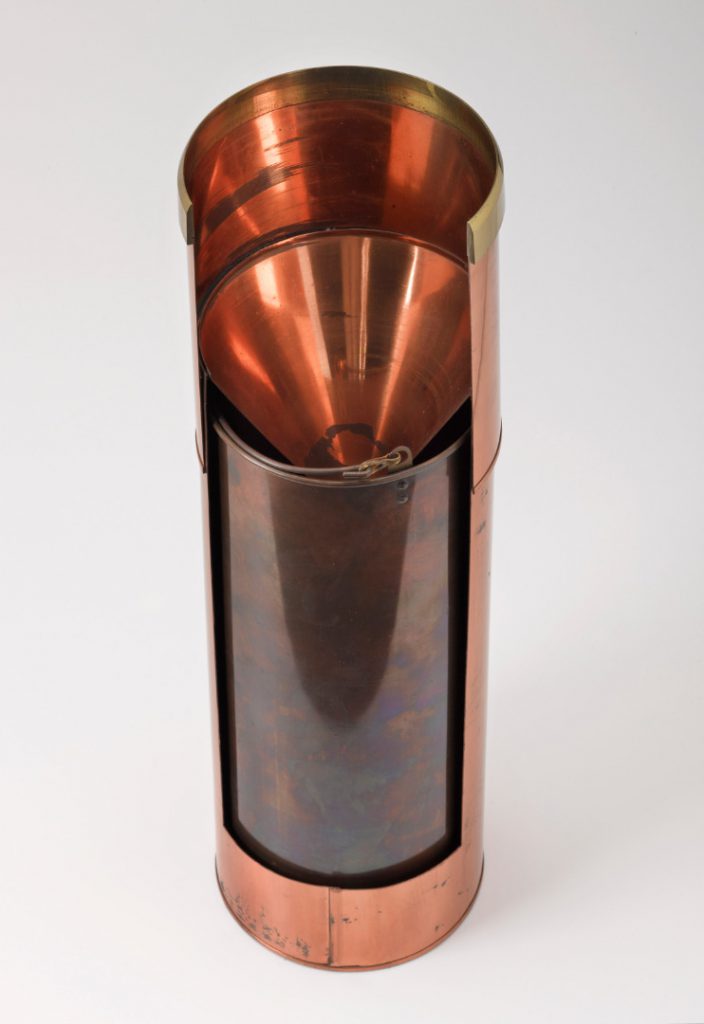
He also exhibited engravings of apparatus employed in rainfall experiments; a diagram of fluctuations of rainfall in central England, from 1726 to 1869; and copies of British Rainfall, the Monthly Meteorological Magazine and his own popular work, Rain; How, When, Where, and Why it is Measured? (catalogue p 721).
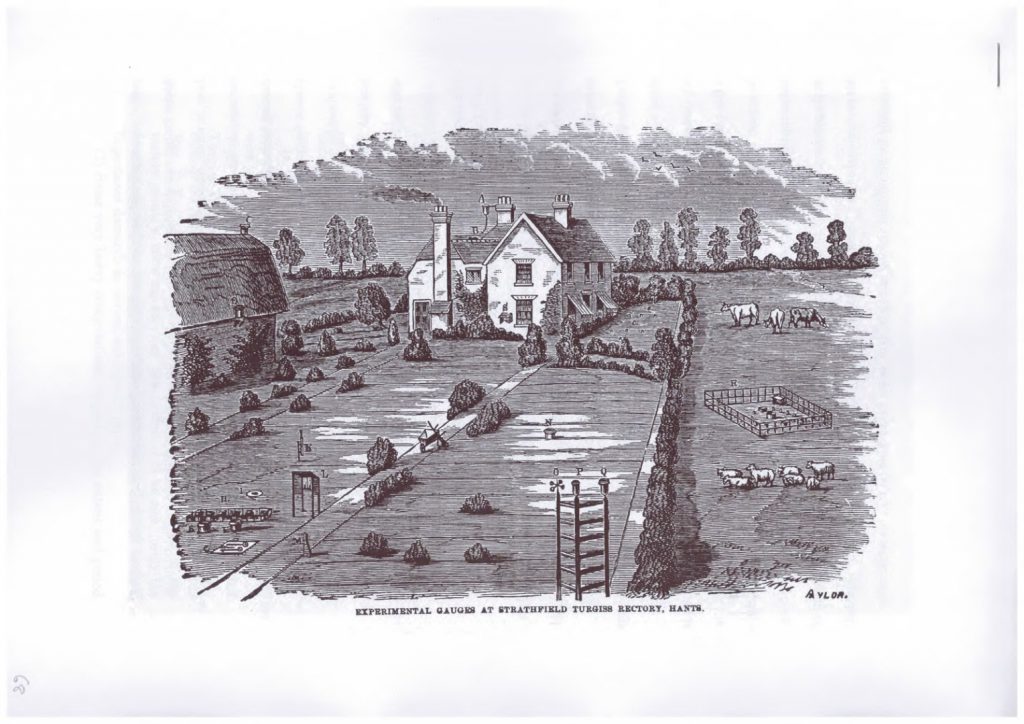
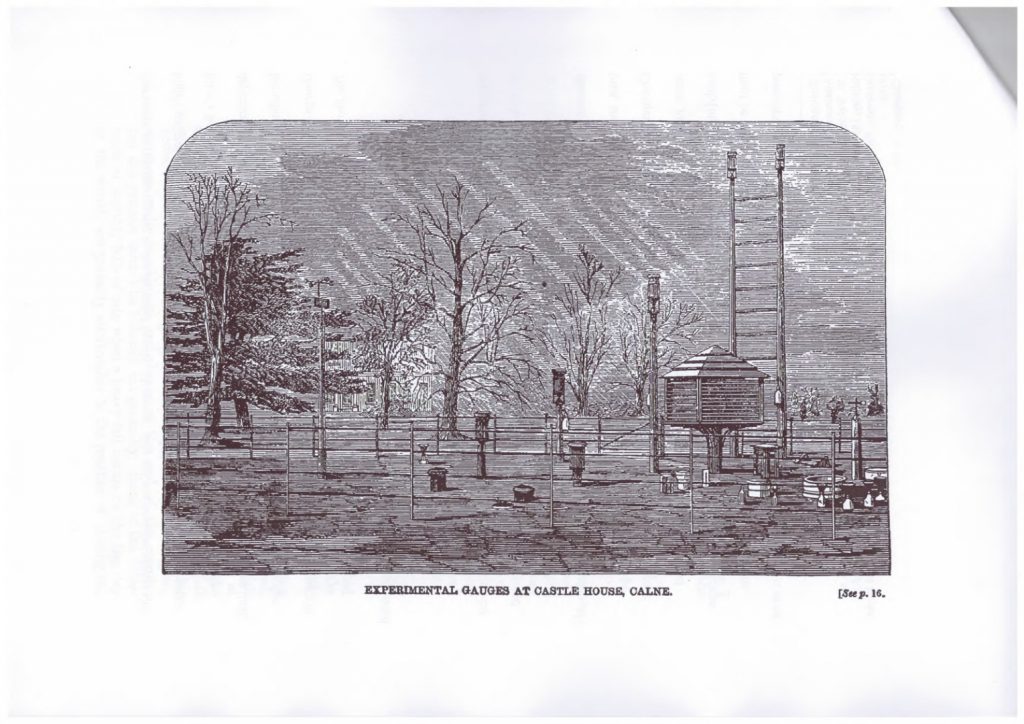
Perhaps most significantly, he exhibited a map showing the sites at which rainfall observations were being made, thus highlighting in visual form the reach and penetration of his network of observers. At the same time, he continued his campaign to preserve the independence of this network, printing in British Rainfall 1876 an account of the BAAS debate surrounding the cessation of its grant (of £100 a year), with his own impassioned speech of support. Symons highlights both the social and geographical diffusion of the network. The observers, he notes, ‘belonged to all classes, from shepherds who took the gauges upon the mountains, and were paid by himself, to noblemen and gentlemen who bore some portion of the expense of the inquiry’. The result was a system which was admired and imitated in other countries. The system now ‘embraced some 2000 stations, so disseminated that it was scarcely possible to drop on any district in the British Isles which was more than four or five miles distant from a station’ (p 8). For a voluntary network, the achievement is impressive, showing that Symons’s newspaper advertising, and word-of-mouth recommendations, had enabled him to achieve optimal coverage not only within England, but across the British Isles. At the BAAS powerful voices were raised in support of his work, from Edwin Chadwick to Captain Douglas Galton, but the verdict in the end was that ‘the time has now arrived when this work should be taken up in a larger public spirit, and consequently that the grant hitherto made should now cease’ (1876, p 10). Residents of the current British Isles will recognise the rhetorical ploy, where praise of ‘public spirit’ is accompanied by a slashing of funds: Symons’s own rhetoric is turned against him.
Although pleas for financial support from the observers themselves became a constant refrain in British Rainfall from this point, Symons continued to grow the network, so that it stood at 3400 at the time of his death in 1900. He continued to maintain both the independence of the system and also his own idealism. In British Rainfall 1880 he reflects back on the growth of the network since its beginnings in 1860, and on the motivations of his participants. The passage is worth quoting in full:
I am myself sometimes astonished at the magnitude of this amateur organization, without either State aid, magniloquent title, managing council or pecuniary resources except the voluntary contributions of the staff – a staff, whereof the members rarely see one another, and still more rarely see their chief, who reside in all parts of the country, from the Channel Islands in the South to the Shetlands in the far North, and from County Kerry in the South-West of Ireland to the Easternmost verge of England at Lowestoft; who include nearly every social grade from peer to peasant; and yet who (with exceptions so rare that they take me by surprise) work with a regularity and heartiness which is beyond praise. Why do they do it? Minor motives may have some influence, but I believe that the leading sentiment which binds together British Rainfall observers is the consciousness that they are helping gradually to store up a mass of information which is, and will yearly become increasingly, valuable to the nation at large – in relation alike to Agriculture, Sanitation, and the proper appropriation of the water supply of the British Isles.
(pp 6–7)
The passage picks up on many of his favourite themes: the voluntary, independent and egalitarian nature of the network; its geographical reach; and its social inclusivity, ‘from peer to peasant’. His speculation on motivations are entirely in keeping with recent research into participation by citizen scientists today: an online survey of 11,000 volunteers with Galaxy Zoo, the founding project for Zooniverse, found that over 40% listed their primary motivation as a desire to contribute to science (Raddick et al., 2015). Such findings cut through simplistic theories of the rational actor, motivated by self-interest, which still hold such sway in the realms of economic theory. Symons’s question, ‘Why do they do it?’, resonates with us today, and lies in part behind the EPSRC project run by Dr Joe Cox, of Portsmouth Business School, on ‘The Wonders of the Zooniverse: Modelling and Optimising Participation in Online Citizen Science’.[9] As Raddick’s research has shown, the desire to make a contribution, beyond any personal desire for self-improvement, education or recognition, stands out as the dominant motivating factor for the Galaxy Zoo participants. Symons, speculating on why his observers would for years brave the elements and record rainfall unfailingly every day, identifies a binding consciousness that their work is of use to the nation; that their individual recordings, perhaps of minor significance in themselves, when added together would form a powerful record, or what we would now term database, which could help address some of the most pressing issues of the time.
Rainfall was not just studied for its own sake in the 19th century, but, as Symons suggests, was a vital element in managing agricultural production, and systems of sanitation and water supply, made all the more pressing by the large-scale shift of the population from the countryside to densely packed towns. Although Symons would appear to have been wholly absorbed in his work with the rainfall observers, he was also exceptionally active in another network of ‘citizens’: the loose affiliation of individuals who formed sanitary organisations across the country, and who sent over a thousand representatives every year to the congresses of the Sanitary Institute. Symons was one of the key figures in this organisation, serving as registrar from 1880 to 1895, and overseeing the development of a national examination structure in sanitary science.[10] He also served repeatedly as president of the section on Meteorology, Geology and Geography. At his opening address to this section, at the meeting in Croydon in 1879, he anticipates the sceptics’ questions: ‘what is the use of making three days of it, and having a lot of dry scientific papers of no use to anybody, and incomprehensible by any but dreadfully scientific people?’ (1880, p 173). He proceeds to demolish the errors in this question: ‘the assumption that there is any difference or distinction between science and practice’; and the belief that scientific papers are inaccessible to the ordinary reader. Once again his egalitarian instincts are to the fore: by dissolving the distinction between science and practice, he eliminates hierarchies; all who participate, at whatever level, are contributing to science. His own paper is also a model of accessibility, showing how meteorological concerns enter constantly into the practical aspects of daily life, from home ventilation to the construction height of buildings.
Symons’s abiding preoccupation with rainfall records, past and present, anticipates current climatological concerns, and his records form part of the data that are now proving invaluable for climate change research. In 1887 he received a grant of £50 from the Royal Society in order to complete his collection of historical data up to 1800. Writing in British Rainfall he highlighted the crucial importance of this historical work: should a drought such as those experienced between 1738 and 1762 recur, ‘not only will every town in England which receives its water supply from a gathering ground be put on short supply, but the canals will have to be closed and agricultural operations will have to be modified’ (1887, p 9). Only with a detailed understanding of past weather patterns could such disruptions to daily life and livelihood be anticipated, and appropriate mitigatory measures set in place. Whilst the 18th-century records offered essential information for the management and planning of Victorian water supplies, the records so painstakingly built up by his observers would, he anticipates, prove crucial for the centuries to come. For the observers themselves, their work takes on a historical trajectory, contributing not only to the science of their time, but also to that of the future, and the wellbeing of generations not yet born.
In one of the current Zooniverse projects, ‘Old Weather: Our Weather’s Past, the Climate’s Future’, citizen scientists are extracting meteorological information from 19th-century ships’ logs, in order to help climate scientists construct predictive models. They are, in a very direct sense, building on the work of their 19th-century predecessors. Symons’s observers were focused on land observations, and on the British Isles (although Symons did also seek out as many observations as he could from British colonies), so this retrospective analysis, with its focus on weather at sea, offers an excellent complement to these earlier studies, whilst the quest for historical weather data also mirrors Symons’s own searching out of historical recordings. The records from Symons’s network of British rainfall observers form the foundation of the Meteorological Office’s historical data, and are now contributing in no small measure to scientific research into patterns of climate change. They are also available free online,[11] giving the work of those dedicated 19th-century observers a longevity and significance which probably far surpasses even their most idealistic expectations.
Although the standard narrative of scientific development is one of increasing specialisation and professionalisation, from the mid 19th century onwards, there are areas where the contribution of the non-professional has remained significant. This is particularly the case in studies of biodiversity, for example, where records of species, and knowledge of specific local areas, lie predominantly in the hands of volunteer members of organisations such as the Botanical Society of Britain and Ireland, which traces its origins back to 1836. Over the course of our project we will be exploring the rich history of these earlier forms of citizen science, and considering what lessons we can learn for contemporary scientific practice. In a recent article, Illingworth et al. (2014) describe their NERC-funded project to use citizen science to provide ‘a feasible and low-cost solution to increasing the number of British rainfall-monitoring stations, with the potential coverage of these measurements extended to cover all areas of settlement across the British Isles’ (p 203), working initially with primary schools. Their work has a distinguished lineage: Symons’s ‘Observers’ are today’s ‘Citizens’.
Tags
Footnotes
Back to text
Back to text
Back to text
Back to text
Back to text
Back to text
Back to text
Back to text
Back to text
Back to text

